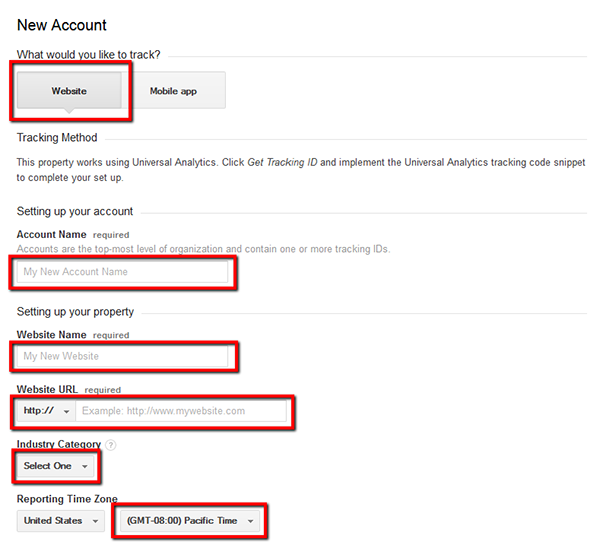How to Use Google Analytics to Supercharge Your Website
Having a pretty website isn’t enough – you also have to know how patients use it. This week, we’ll show you how to use Google Analytics to understand user behavior, provide patients with a better experience, and supercharge your practice website.
Episode Transcript: How to Use Google Analytics to Supercharge Your Website
Hello everybody, and welcome to the Medical Marketing Podcast from Messenger – the show where we give physicians and practice marketing managers actionable tips and advice to help improve your marketing, grow revenue, and take patient experience to the next level.
I’m your host, Crawford Ifland, and this week we’re going to be talking about the importance and power of Google Analytics – let’s jump into it.
What is Google Analytics?
First off, let’s answer a fundamental question: what is Google Analytics?
Google Analytics is a free piece of software that can help you understand how patients use your practice website. It’s really simple to set up, and can give you a wealth of information about your website and user behavior that can help you make more informed marketing decisions.
Google Analytics is an essential tool for all businesses to understand how people are interacting with their business online, for two key reasons:
Reason #1: It’s free. Like, 100% free. You won’t ever pay a dime for Google Analytics, but you can take advantage of all its powerful features straight out of the box.
Most enterprise software that can deliver this much power would cost hundreds – if not thousands – of dollars per month…and when you’re running a busy practice, those costs can add up. So it’s always nice to find free tools…and Google Analytics fits the bill.
Reason #2: The data it gives you on user behavior is astounding. You can slice and dice nearly every metric imaginable straight out of the box – and if you do some custom setup, you can get even more advanced features and analysis.
For instance, if you wanted to, you can tell how many people visited your website after seeing a billboard on the freeway – how long they stayed, what pages they visited, if they requested a consultation, how much potential revenue they brought in to your practice, and whether the cost of that billboard was worth it.
You can determine where patients have a hard time browsing your website from their iPhones, which of your services are most popular, and whether that billboard you put up or the ads you put on the radio were a better investment.
All of that is possible with Google Analytics – and it’s not even that hard to do.
Oh, and did I mention it’s free?If you’re in private practice and want to make better and more informed marketing decisions, there is no good reason to not use Google Analytics.
Why does Google Analytics Matter for Private Practices?
Google Analytics is a vital tool for any business of any size – but if you’re in private practice, I believe it’s especially important. Here’s why:
As a doctor, you’re focused on providing care to your patients – marketing probably falls to the back burner.
If you’re lucky enough to have a marketing department at your practice, you need to be able to rely on them to make quality decisions about where to spend money, what to make strategic investments in, and to determine how well those investments have performed over time.
Patients are the lifeblood of your practice – without patients, you couldn’t keep the doors open.
And more often than not, your marketing is the primary driver of patient flow. In a very real way, marketing is what keeps the lights on at your practice…so you need your marketing team to make wise decisions that will contribute to the health of your practice.
But in order to make good decisions, your marketing staff needs the very best data available.That’s where tools like Google Analytics come in.
Website analysis tools that can slice and dice the data as I described earlier can help you make better decisions because they put the right data at your fingertips when you need it.
Think about it: You probably wouldn’t set off on a long road trip without a map…and you probably wouldn’t look at the map only once – you would check in periodically to make sure you were still on the right road, headed in the right direction.
You probably wouldn’t invest for retirement without doing some research and planning first…and you probably wouldn’t “set it and forget it” – you’d check in to see how your investments were performing against your goals, and make adjustments if necessary.
Your practice website and your marketing are no different.
Why would you spend time, money, and effort on marketing channels if you had no way of knowing whether they were effective or not? Wouldn’t you want to check in occasionally to see if your efforts were measuring up to your goals?
Of course you would…and that’s why Google Analytics is such a powerful tool.
Next up, if you’re not yet using Google Analytics, we’ll show you how to get started.
How to Install Google Analytics
If you’ve never used Google Analytics before, getting started is easy. You’ll want to go to analytics.google.com and sign up with your Google Account:
 At the end of the signup, Google will give you a small bit of code to place on your website. You can handle this code yourself if you know how and where to put it in your website, but you may want to contact your web developer for help:
At the end of the signup, Google will give you a small bit of code to place on your website. You can handle this code yourself if you know how and where to put it in your website, but you may want to contact your web developer for help:
![]() Once the code is in your website, Google Analytics will begin collecting user data so you can understand how patients use your website and uncover long-term trends and metrics that help you make better marketing decisions.
Once the code is in your website, Google Analytics will begin collecting user data so you can understand how patients use your website and uncover long-term trends and metrics that help you make better marketing decisions.
There are plenty of advanced features like event tracking and goal conversions that can give you much more granular control, but we won’t get into those here. If you’re interested in setting those up, just drop us a line at info@messenger.md and we’ll help you out.
Ok, so now you’ve got Google Analytics set up. But the question remains – how to use it? Next up, we’ll show you a few key metrics you want to be tracking.
How to Use Google Analytics
There are several basic metrics you’ll want to keep an eye on in Google Analytics.
- Users. This is a look at how many people have visited your website. It’s useful to keep an eye on this number over time to know if your marketing campaigns are delivering real people to your site – and how your site is growing in traffic over time.
- Bounce Rate. Bounce Rate is a measure of how many people land on a page on your website and then exit without clicking to another page. These visits are called “bounces”, and in general, you want your bounce rate to be low. Now, some patients can visit your appointment page first, request an appointment, and click away. This would be a 100% bounce, but it’s not a bad thing – they scheduled an appointment, after all! But in general, you want your bounce rate to be low – that means that patients are clicking around…and the more they click around, the higher chance you have of getting them to schedule an appointment.
- Popular Pages. This metric shows you which pages on your site receive the most traffic. Your homepage will probably be the most popular page, but from here, you can see which pages patients care about the most and make decisions from that data.
- Mobile Usage. If your site doesn’t load quickly or is hard to navigate on phones and other mobile devices, you may have a big problem on your hands. The Mobile Usage report will give you an idea of what percentage of patients visit your website on a phone or tablet as compared to a desktop computer – and the number might be higher than you think.
- Acquisition Reports. Acquisition Reports give you an idea of where you patients came to your website from: did they click on a Facebook ad? Did they type your website URL in directly, or did they do a Google Search? This report can help you understand which marketing channels and campaigns are most effective, and which may need a little TLC.
Now, there are loads of reports and metrics that you can track in Google Analytics – an entire book could be written on it – but these are some of the most essential basic metrics that you will want to keep an eye on to determine the relative “health” and performance of your practice website over time.
Next up, we’ll explore some best practices on how to integrate Google Analytics into your business to grow a more healthy practice.
Integrating Google Analytics to Grow a More Healthy Practice
Far too many practices set up a tool like Google Analytics on their websites…and then never check back in to see how things are going.
But if you want to get the most out of Google Analytics’ powerful reporting, you have to make it a habit.
As management guru Peter Drucker once said, “What gets measured gets managed.”
One of the easiest – and most powerful – strategies is to set aside a half an hour on your calendar at the end of each work week to review your performance. Here are some questions I recommend you ask:
- How many visitors did we get to our website this week compared to last week?
- Did people spend more or less time on our site this week or last week?
- Which pages were most popular on our site this week?
- Which marketing channels performed the best this week compared to last week?
- Are there any pages or channels that are underperforming or missed our expectations?
- How many leads did we get this week compared to last week?
- What will we do next week to try to increase our numbers in each of these categories?
Just asking these questions and making note of these metrics will do wonders to your marketing performance over time.
I also recommend that you set aside a little more time – an hour, perhaps – at the end of each month to review your long-term performance for the month, the quarter, and how your current performance stacks up to your performance at the same time last year.
By regularly reviewing your metrics, you’ll know what’s working well, what isn’t, and concrete steps you can take to fix any issues that may arise. Over time, you’ll begin to make smarter, more data-driven decisions that can improve your performance and grow a healthier practice over time.
That’s the power of Google Analytics.
Next Week…
Well, that’s all for this week’s episode of the Medical Marketing Podcast – thanks for listening.
Whether you’re new to the show or have been listening for a long time, check out our website at www.messenger.md. We’re always sharing helpful resources and know-how to help you improve your practice marketing, grow revenue, and take your patient experience to the next level.
That’s all for today’s episode – I’m Crawford Ifland. See you next week.







